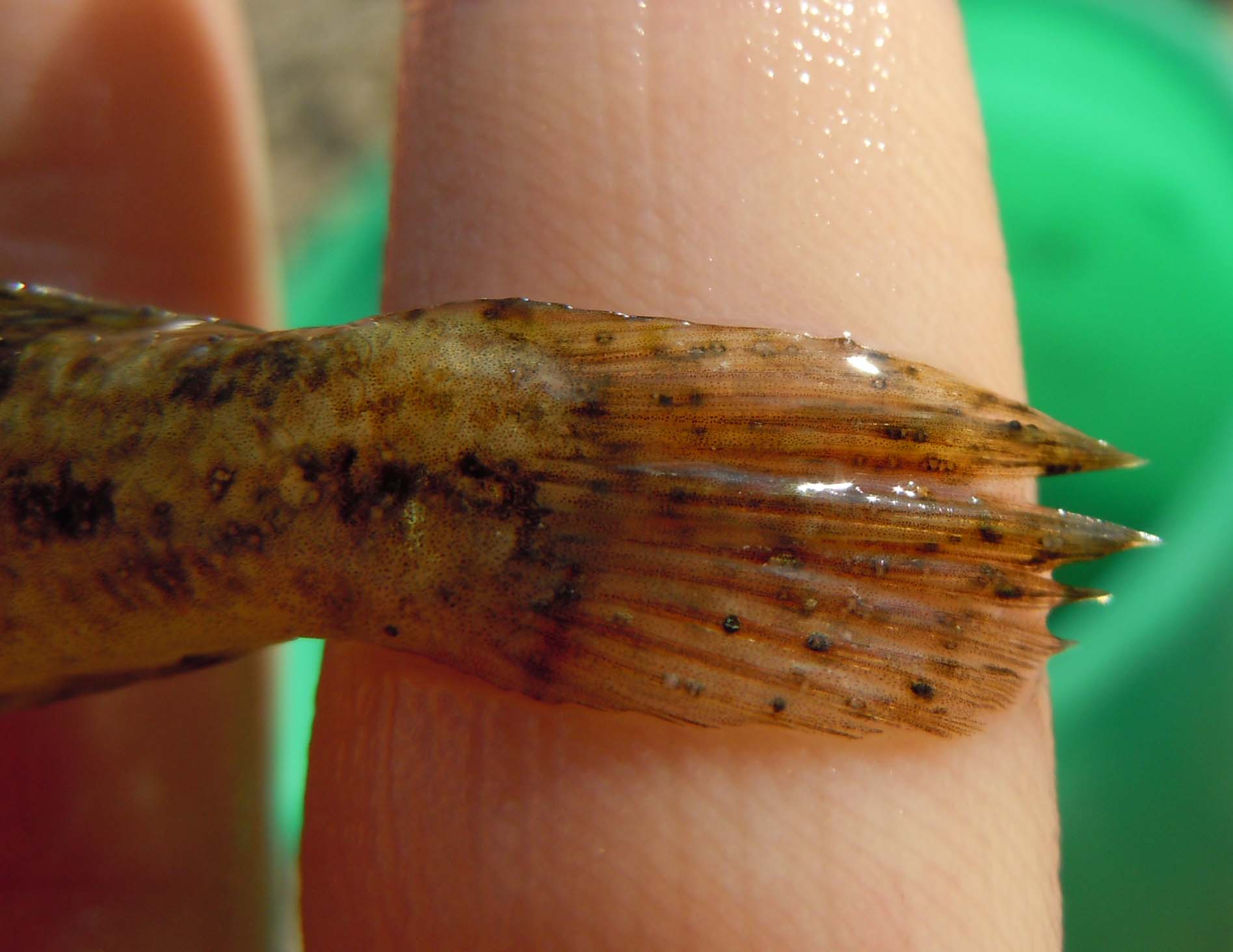
Cryptocotyle lingua
Platyhelminthes
Cryptocotyle lingua is a digenean trematode, an obligate parasite, whose life-cycle includes early stages (eggs, rediae, cercariae) in snails of the genus Littorina, middle stages (metacercariae) in the skin of marine fishes, and adult stages in the digestive tracts of fish-eating birds and mammals. As a parasite of fishes, birds, and such mammals as seals ,one can expect that some of its stages (metacercariae and adults) have a potential for very wide natural dispersal, and even greater dispersal by the human trade in fish. The USDA National Parasite Collection database (2008) has several records from fish-eating zoo animals (Seals, Pelicans, Penguins) in the National Zoological Park, Washington. However, if we assume that the completion of the life cycle is dependent on Littorina snails, that limits the native range. This trematode is most frequently reported from L. littorea (Common Periwinkle), but is also commonly found in L. saxatilis (Rough Periwinkle) and L. obtusata (Flat Periwinkle), and the sibling species of the associated species complexes (L. saxatilis- L. arcana; L. compressa; L. obtusata- L. fabalis).In the Northeastern Atlantic Ocean, Cryptocotyle lingua is known from France to Norway, the White and Barents Seas, and Iceland (Blakeslee et al. 2008). In the Northwestern Atlantic, where it is most frequently found in Littorina littorea (Common Periwinkle), it has been collected in snails form Long Island Sound to Labrador (Blakeslee and Byers 1988). It has long been suspected of being introduced, together with its common host snail. The introduced status of the Common Periwinkle was questioned. However, more intensive genetic sampling of the three major species of Littorina, and analysis of their parasites supports a human-mediated introduction of L. littorea, within the time of European settlement, based on its sharply reduced genetic diversity and parasite load in North America (Blakeslee and Byers 2008; Blakeslee et al. 2008). A similar genetic analysis of C. lingua also supports an introduction within the last four centuries (Blakeslee et al. 2008). Blakeslee et al. (2008) estimated the date of introduction of Cryptocotyle lingua in a range between means of 230 and 460 years ago, varying with assumed mutation rates of 2-3% . These estimates are consistent with an anthropogenic introduction, probably with the Common Periwinkle, which had a similar estimated date of introduction (364-690 years ago) (Blakeslee et al. 2008). The Common Periwinkle was first reported in North America in Pictou, Nova Scotia in 1840, and now ranges from the Atlantic Coast of Virginia to Labrador. The parasite has been collected in snails and fishes from Long Island Sound to Labrador (Blakeslee and Byers 2008; Blakeslee et al. 2008; US National Parasite Collection 2008). The earliest North American collection, from a wild animal, of which we are aware is from a Laughing Gull (Larus atracilla in Woods Hole Massachusetts in 1911, although earlier specimens were taken from zoo animals (US National Parasite Collection 2008).
The photograph is of metacercariae of Cryptocotyle sp. (small black dots) attached to the fins of a fish (Round Goby, Neogobius melanostomus.)